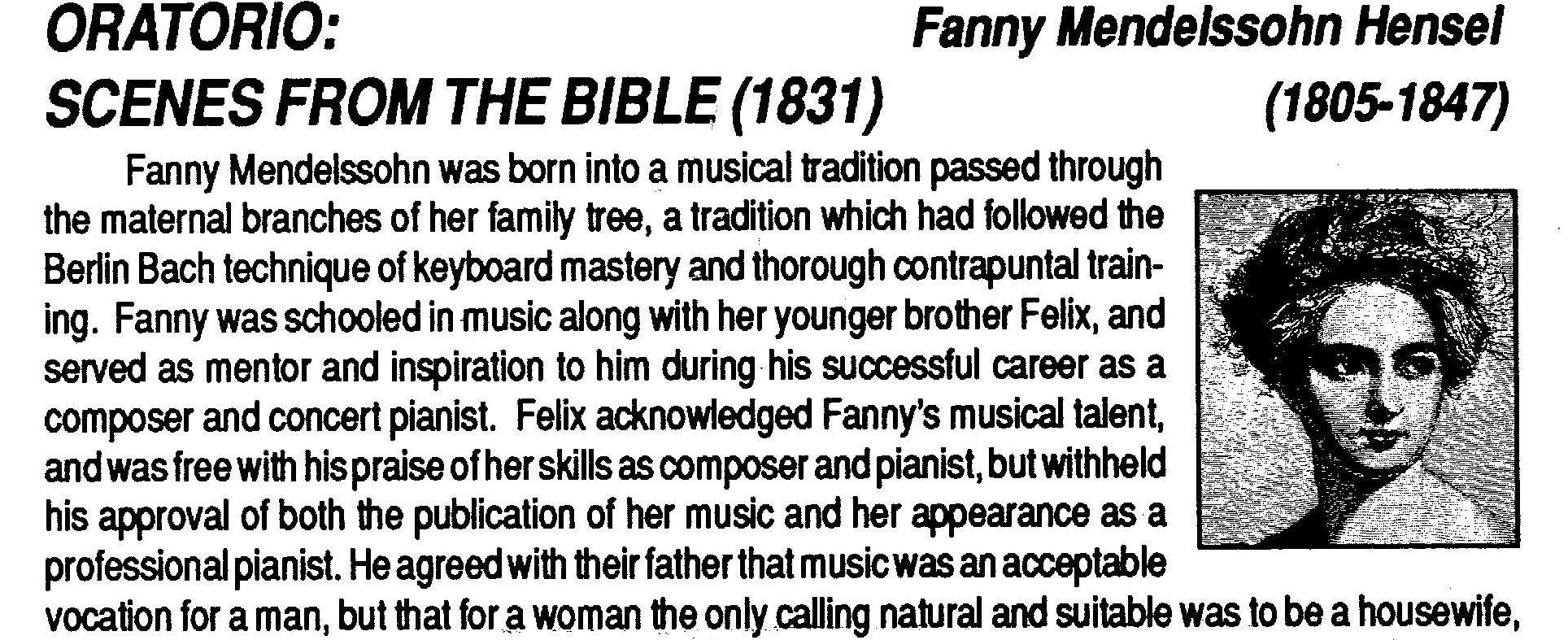Works by Fanny Hensel and Libby Larsen Presented in 1990
Bringing a major historic work to light and presenting a recently-composed work — along with a well-known historical reference point in music — was all in a day’s work for The Women’s Philharmonic in 1990. This program note ((c) Robyn Bramhall and The Women’s Philharmonic)
is still a great read about the works by Fanny Hensel and Libby Larsen on the program. The description of the obstacles that Hensel faced, and that she began of overcome only near the end of her too-short life, remains vivid and compelling.
Some new details have since been discovered about Hensel’s work — this note from a 2010 performance (by the ever-adventurous Leon Botstein and the American Symphony Orchestra) explains that
“in 1996 orchestral parts of the cantata turned up bearing the title Cantate nach Aufhören der Cholera in Berlin, 1831 (Cantata after the Cessation of the Cholera in Berlin, 1831), and Mendelssohn’s diaries, released in 2002, refer to her Choleramusik, finally enabling us to identify and title the full score.”
So we now know the work is a Cantata, and understand Hensel’s motivation in writing it — it was in response to the great cholera pandemic of 1826–37. Prof. R. Larry Todd, author of the 2010 note, released a major biography of Hensel, one of the exciting examples of scholarship that has taken place since The Women’s Philharmonic did so much to bring her music to light in the 1980s and ’90s. Despite the rediscovery and some high-profile performances, the Cantata still does not get the exposure it deserves: there is still no high quality recording of the work available in the U.S. – there is an amatuer German recording, but it is not of the level to reveal the brilliance of Hensel’s music.
The 1990 performance also featured a recent work by Libby Larsen, “Symphony: Water Music” a piece she had written as a tribute to the 300th anniversary of G.F. Handel’s birth in 1985. The program was vital testimony to The Women’s Philharmonic mission that was often described as one of “birthing and unearthing” — bringing recent works, as well as unknown historic works to light through pathbreaking performances.

